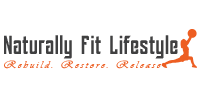Foam Roll Modifications for Pregnancy
Wondering if you can foam roll during pregnancy? The answer is YES!
I have foam rolled through all 3 of my pregnancies and it has been a huge lifesaver for me. It really helps relieve those aches and pains associated with pregnancy and is something I make sure I do daily. Hip pain, back pain, stiffness in the morning… you name it, foam rolling will help alleviate it. Your body changes so much while being pregnant, so give yourself a “self-massage” every day with your foam roller. Then take some time to stretch after to really achieve some relief!
Modifications
There are a few modifications to incorporate as you get further along in your pregnancy and that belly gets bigger. But really, the modifications are pretty basic. Yes, it will feel awkward and different… but what doesn’t while you’re pregnant. 😆
- Transition in and out of different positions SLOWLY.
- Engage your deep transverse abdominal and pelvic floor muscles while rolling certain areas (explained in videos).
- Roll on and off of the foam roller when changing positions, rather than just “sitting straight up”. This will protect your core and decrease pain in your abdomen.
Check it out- I go through my whole foam rolling routine with modifications explained:
Watch to learn how to engage your transverse abdominal muscles while you are pregnant:
How does the foam roller work?
Foam rolling is like a self, deep tissue massage you can do anywhere, for a one-time price of $20! (Not that deep-tissue massage therapist aren’t spectacular and amazing… but it’s a more convenient and cheap way for a quick self-treatment.)
When you use the foam roller, it’ll help break up the myofascial sheath that lays over your muscles. Which when tight, inhibits muscle movement and its ability to stretch. This is where a lot of pain stems from. The constriction of movement of the muscles. Prolonged inactivity, injuries or repetitive motion, can degrade the function of the muscles and their fascia (a network of connective tissue that surrounds and supports muscles). Blood flow can’t get to the area and the area stays restricted and compromised which causes pain.
The pressure of the foam roller allows for that myofascial release of the muscle. Myofascial release is what happens when you apply firm pressure to a trigger point (in the muscle belly) for a few seconds, which results in a release of tension from the muscle and encourages recovery. From there static stretching can be performed more easily, as the muscles are less constricted.
Want more information about foam rolling and which to buy?
Check out my post The Ultimate Foam Rolling Guide. Here I have links to different types of foam rollers you can purchase and why you would want them.
Or grab your FREE Foam Rolling Print Out HERE!







